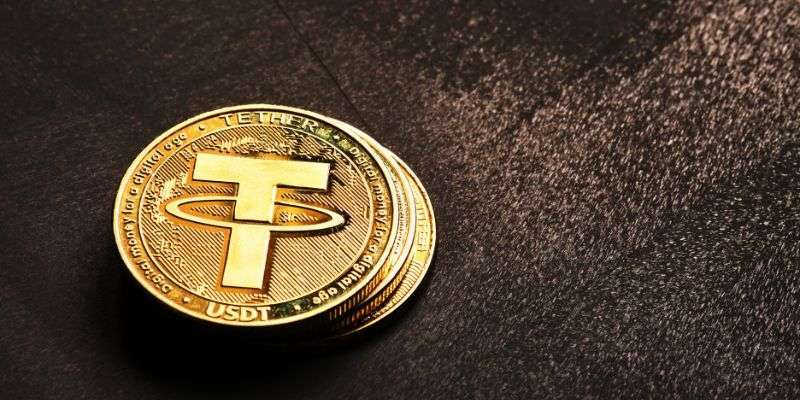The cryptocurrency market has experienced rapid growth and innovation, introducing digital assets like Tether that aim to provide stability and liquidity. However, amidst the evolving landscape of digital currencies, the concept of a Tether violation has emerged as a point of concern for investors, regulators, and industry participants.
How Tether Works
Tether, often referred to as USDT, is a stablecoin intended to maintain a 1:1 peg with traditional fiat currencies like the US dollar. This stability is accomplished through Tether Limited’s reserves, which are purportedly backed by assets like cash equivalents, loans, and other investments. Tether operates on blockchain technology, allowing for efficient and transparent transactions across various cryptocurrency platforms.
Signs of Tether Violation
Identifying potential Tether violations requires a nuanced comprehension of market dynamics and regulatory frameworks. A few key signs that might show Tether violations include:
- Price Volatility: Unexplained variances in Tether’s price, particularly deviations from its pegged esteem, can propose market manipulation or speculative exchanging.
- Abnormal Trading Patterns: Peculiarities in Tether’s exchanging volumes, like abrupt spikes or consistent examples of purchase/sell orders, may demonstrate facilitated endeavors to impact market prices.
- Lack of Transparency: Inadequate revelation of Tether’s reserve property, audit reports, or regulatory compliance measures can raise questions about the symbolism’s authenticity and stability.
Types of Tether Violations
Tether violations can appear in different structures, each with its ramifications for market integrity and investor trust. A few common types of Tether violations include:
- Market Manipulation: Purposeful actions to misleadingly swell or flatten Tether’s price through-composed exchanging strategies, wash exchanging, or spoofing techniques.
- Unauthorized Issuance: Creation and dispersion of Tether tokens without appropriate backing or regulatory endorsement, prompting worries about liquidity risks and market mutilations.
- Insider Trading: Abuse of special data or admittance to Tether’s operations to acquire out-of-line benefits in exchange, disadvantaging other market participants.
Consequences of Tether Violations
The consequences of Tether violations can resonate all through the cryptocurrency ecosystem and more extensive financial markets. A few potential repercussions include:
- Market Disruption: Violations can upset market stability, prompting expanded volatility, decreased liquidity, and uplifted risk for investors.
- Regulatory Scrutiny: Regulatory authorities might mediate to examine Tether-related misconduct, force fines or authorizes, and carry out stricter oversight measures.
- Loss of Trust: Steady violations can dissolve investor confidence in Tether’s stability, transparency, and governance, possibly prompting diminished adoption and utilization.
Common Misconceptions
Despite Tether’s widespread usage and influence, there are several misconceptions surrounding Tether violations and stablecoin operations in general. These misconceptions include:
- Overestimation of Backing Reserves: Some accept that Tether’s reserves are overinflated or deficiently supported, raising worries about its capacity to keep up with stability during market variances.
- Impact on Market Stability: There is banter about whether Tether’s operations, including likely violations, altogether affect general cryptocurrency market stability or on the other hand assuming they are disconnected occurrences.
- Regulatory Compliance: Questions emerge regarding Tether’s compliance with existing regulatory frameworks, audits, and transparency standards, prompting vulnerabilities about its legal status and future regulatory actions.
Preventing Tether Violations
To moderate the risk of Tether violations and advance a more straightforward and strong cryptocurrency ecosystem, partners can go to proactive lengths, for example,
- Enhanced Transparency: Tether backers and exchanges can further develop transparency by giving normal audits, point-by-point reserve reports, and clear correspondence about compliance measures.
- Regulatory Collaboration: Cooperation between industry participants, regulatory authorities, and standard-setting bodies can work with the improvement of powerful regulatory frameworks and best practices for stablecoin operations.
- Investor Education: Instructing investors about the risks, benefits, and appropriate utilization of stablecoins like Tether can engage them to pursue informed choices and keep away from expected traps.
The Future of Tether Regulation

As the cryptocurrency market continues to evolve, the regulation of Tether and stablecoins is probably going to go through tremendous changes. Future developments may include:
- Regulatory Clarity: More clear guidelines and regulations overseeing stablecoin issuance, operations, and market conduct to upgrade investor protection and market stability.
- Technological Innovations: Proceeded with advancements in blockchain technology, smart contracts, and decentralized finance (DeFi) may impact how stablecoins like Tether are controlled and used.
- Global Coordination: Expanded worldwide cooperation among regulatory bodies and financial institutions to address cross-border challenges and guarantee consistent regulatory standards for stablecoin ecosystems.
Conclusion
In conclusion, Tether violations represent a complex and developing challenge within the cryptocurrency industry. By understanding the signs, types, consequences, and prevention measures related to Tether violations, stakeholders can contribute to a more transparent, secure, and strong digital asset environment.
To discover how to set and achieve financial goals in 2024, check out our comprehensive guide on HOW TO SET AND ACHIEVE FINANCIAL GOALS IN 2024.

